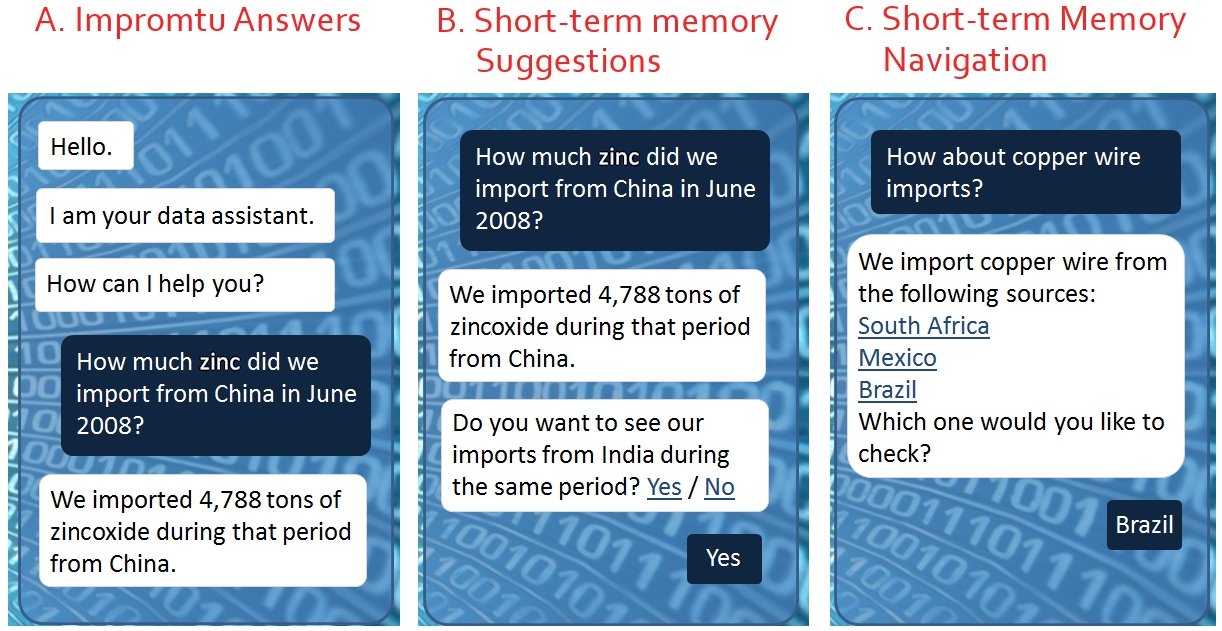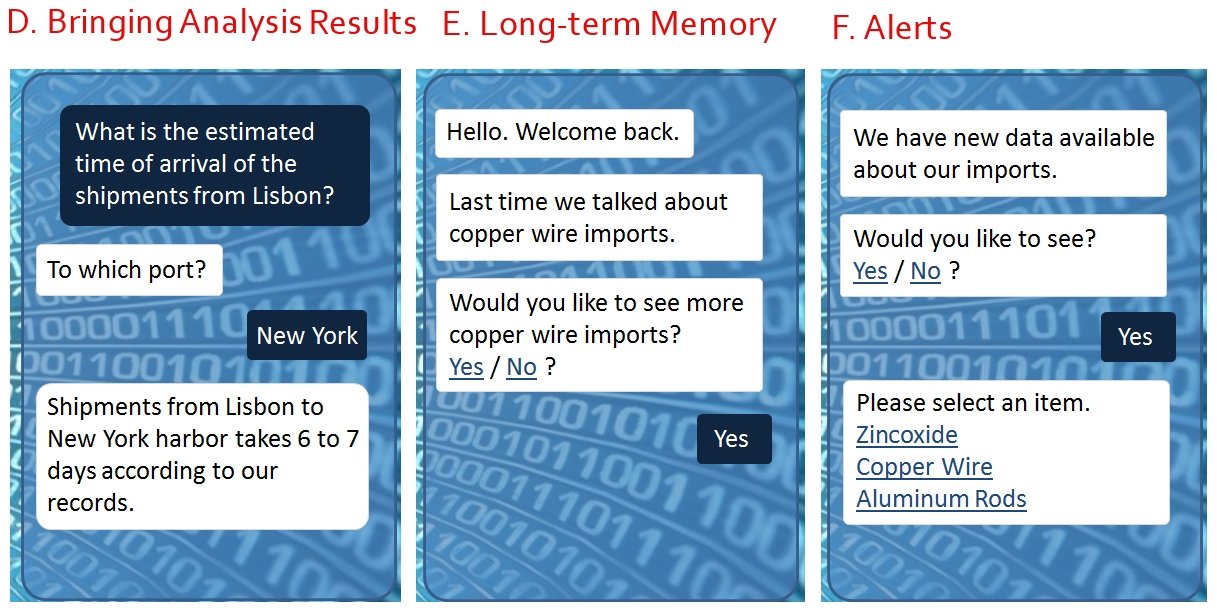We are proud to announce a new partnership with MAANA, a pioneering tech company that turns data into actionable knowledge to accelarate enterprise profitability. The objective of this collaboration is to add a communication option where the users of the knowledge platform interact with the system via the most casual, natural, and untrained conversations. The vision of bringing knowledge/data assistants into operational workflows is remarkable from the stand point of industrial artificial intelligence (AI).
In this article, we will share a simplified description of the problem at hand, and the path to its solution in its most general manner. The modes of conversation presented at the bottom of the article are self-descriptive value propositions as to how access to knowledge can be accelerated.
Before I do that let me briefly explain what Maana knowledge platform does and how exClone technology works with it.
The Maana Knowledge Platform is used by the largest Fortune 500 companies in the world and is uniquely designed to enable subject-matter experts to quickly build hundreds of interconnected models that encode the expertise of subject-matter experts combined with data from across silos in the context of optimizing an asset or workflow. These knowledge models provide continuous, actionable recommendations into the operations of assets and workflows enabling faster and better daily decisions by thousands of employees that result in increased enterprise profitability.
What can Chatbot Communication bring to the table?
In its most simplified strawman drawing, turning data into knowledge requires handling of 5 technical problems collectively. Going from bottom to top, they are (1) data silos and data lakes, (2) integration, (3) analysis, (4) retrieval, and (5) communication.
At the top layer, communication function must allow the users interact with the system in the most casual, natural, and untrained manner. That’s where chatbots play an important role as being a part of the last ring of the chain.
You might as well consider chatbot as a waitress/waiter in a restaurant. Despite the massive operation in the kitchen and abundance of meal options, the only interface you would have with this system would be her/him. A typical customer – waitress interaction lays out all possible combinations that a chatbot must handle.
- Going over the menu: A typical and most common interaction where the customer is presented options to chose from and the questions about the options are answered.
- Questions without the menu: An interaction where customer choses to investigate options without looking at the menu, and such questions must be answered impromptu which may sometimes lead to a menu item.
- Specials: An introductory style of interaction where the waitress takes an active step to assist the customer about the best options for that particular moment in time before any conversation starts.
- Remembering the customer: An interaction with a known customer where previously used options are brought up, and the customer is alerted to the variations from the previous state of affairs.
These 4 types of interactions are the range of information service applicable to all chatbot applications. Bringing these on the table of knowledge platform, however, has some unique challenges.
How Does a Chatbot Serve Knowledge Platforms?
There are 5 main functions of a chatbot to bridge the gap between the end-user and a knowledge platform as shown in the simplified diagram below.
- Interface: Chatbot interfaces are usually simple and SMS like, which are enriched with image and video insertions. They are particularly popular for their advantages in the ever growing mobile device usage. No special requirements would apply to interface design that could be attributable to the knowledge platform.
- Decision: This is the state information of the ongoing conversation where the system (1) qualifies if the user’s response needs to be sent to the knowledge platform, (2) if there are options to present for navigating to the next level, (3) if the current response is the continuation of the previous response via short-term memory, (4) if the user must be helped according to his/her historical choices, and (5) if the user’s response is related to the answers in the short-term memory. This list is actually much larger with details that belong to the type of application and nature of the knowledge operation.
- Translation: This step translates a qualified English sentence (qualified by the Decision step) to a system specific retrieval command(s) within the knowledge platform. This translation requires ontological parsing of the English sentence then formation of it in the new language.
- Generation: Once the result is retrieved, it has to be put into an English sentence for better communication. This seemingly simple task can actually be quite challenging, and is also known as the generation problem in computational linguistics. Bite-size information is a concept that has to be decided for the generation step according to the objective of the chatbot. For example, if the chatbot is helping with federal regulations, then the bite-size information can be a full sentence, or sometimes a paragraph, of unedited original text, with very little generation challenge. However, with numerical data, diagrams, tables, images, or video, the bite-size determination can be a difficult task.
- Navigation: This step requires an independent cycle of communication with the knowledge platform to harvest available options of navigation. Usually, the options within the knowledge domain are mirrored at the chatbot level so that the users can access knowledge with less effort.
Modes of Conversation
There are various modes of conversations that a chatbot can conduct, making this interaction much more valuable than using a static, single-step search box. Here are some of these possibilities using a hypothetical content.
Case A above shows an impromptu answer (4,788 tons) presented with the generation capability. Case B and C show how chatbots can utilize their short-term memory to suggest alternatives and navigation options while remembering important aspects of the original query that was asked 2, 3, and sometimes 4 steps earlier. While the knowledge platform was utilized in A, the responses B and C may come from the chatbot itself depending on the availability of embedded (learned) content. Also note that the clickable options are very useful especially when the chatbot is used on a mobile device.
Case D shows a possible exchange to narrow down the type of analysis available in the knowledge platform domain before it has been retrieved. Case E illustrates long-term memory to continue the previous conversation which can eliminate unnecessary steps to reach back to the same point. Case F shows that knowledge platform and chatbot can create alerts to indicate updates in the back end.
These are some of the possible exchanges that could be achieved from chatbot – knowledge platform combination.





